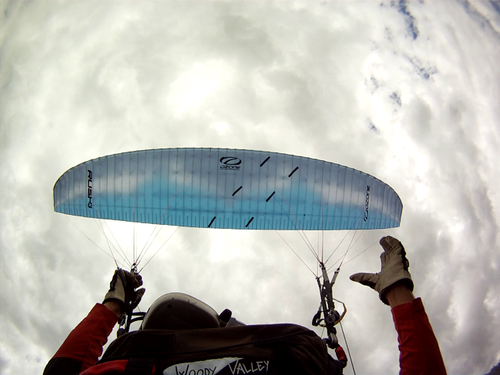Ozone Gliders Rush 3 M |
|||||||||||||||||||||||||||||||||||||||||||||||||||||||||||||||||||||||||||||||||||||||||||||||||||||||||||||||||||||||||


|
|||||||||||||||||||||||||||||||||||||||||||||||||||||||||||||||||||||||||||||||||||||||||||||||||||||||||||||||||||||||||
Instability rating |
|||||||||||||||||||||||||||||||||||||||||||||||||||||||||||||||||||||||||||||||||||||||||||||||||||||||||||||||||||||||||
|
|||||||||||||||||||||||||||||||||||||||||||||||||||||||||||||||||||||||||||||||||||||||||||||||||||||||||||||||||||||||||
Glider characteristics |
|||||||||||||||||||||||||||||||||||||||||||||||||||||||||||||||||||||||||||||||||||||||||||||||||||||||||||||||||||||||||
|
Launch preparations: difficult
launch characteristics: dynamic, climbs constantly, no guidance necessary, good feedback during inflation, overshoots, pronounced braking required, accelerates before zenith, control check simple, low takeoff speed
asymmetric collapse: canopy colllapses at high angle to leading edge, high dynamics, total course change 180-270°, (3), fast course change rate, marked forward pitching 60-75°, (4), very high height loss 50-59 m, (4), moderate sink velocity 15-19 m/s, (2), with cravat, (5), G-Force 2,5- 2,9 G, (2)
Frontal collapse: canopy collapses with high total collapse aera, moderate pitch backwards 30-45°, moderate pitch forwards 30-45°, moderate dynamics, no course change, (1), recovery usually immediate, symmetric recovery, delayed return to normal airspeed, delayed reinflation of wingtips, moderate height loss 30-39 m, (2), low sink velocity 10-14 m/s, (1)
Spiral dives: rapid sink velocity increase, High G-Force 4,0-4,5 G, (3), Sink velocity after 720° <14 m/s, (1), Very high maximum sink velocity <25 m/s, (4), sink velocity increase < 10 m/s on brake release, (4), Course change 90-180° after spiral exit, (1), moderate height loss during recovery 30-60 m, (2)
B-Stall: normal force required, marked pitch backwards 30-45°, moderate pitch forwards 15-30°, unstable sink phase, high deformation tendency, immediate return to normal airspeed, 8-10 m/s, height loss on recovery 20-40 m
big ears: simple initiation, unsteady flight phase, wingtips flatter a little, immediate automatic recovery, Vsink unaccelerated 2,5-3 m/s, Vsink accelerated 4-4,5 m/s, Vunaccelerated 0-3 km/h less than trimspeed, Vaccelerated >8 km/h faster than trimspeed |
|||||||||||||||||||||||||||||||||||||||||||||||||||||||||||||||||||||||||||||||||||||||||||||||||||||||||||||||||||||||||
Notes |
|||||||||||||||||||||||||||||||||||||||||||||||||||||||||||||||||||||||||||||||||||||||||||||||||||||||||||||||||||||||||
|
Launch preparations: On gliders where thin, unsheathed gallery lines are present (Nova Mentor 2, Swing Mistral 6, Ozone Rush 3, Gradient Golden 3, Skywalk Chili 2, Nova Ion Light) line checks become increasingly demanding. Launch characteristics: Gliders which climb rapidly and need a good block on the brakes to prevent them from overshooting require mode advanced coordinative skills to launch safely. This was the case with Ozone's Rush 3; particularly at steep launch sites, good reactions are required to keep the canopy under control at all times. Asymmetric Collapses: Large collapses, on the outer limit of the norm measurement field can lead to cravats, and require active recovery from the pilot to prevent entering a spiral dive. Cravats, generally the “worst case scenario” for hobby pilots occurred on Ozone's Rush 3 when collapsed massively. This glider passed the LTF tests with folding lines attached to the front of the canopy, and reacts more dynamically to collapses induced via the A-risers. We note here critically, that folding lines are not necessary to collapse the glider according to the LTF-norm. |
|||||||||||||||||||||||||||||||||||||||||||||||||||||||||||||||||||||||||||||||||||||||||||||||||||||||||||||||||||||||||
Rating |
|||||||||||||||||||||||||||||||||||||||||||||||||||||||||||||||||||||||||||||||||||||||||||||||||||||||||||||||||||||||||
|
Safety class 5 This class of paraglider reacts very demandingly to one or more of the following manoeuvres: frontal collapse, asymmetric collapse or spiral dive and may present pilots with a particular challenge.Very demandingly means that the above manoeuvres result in highly dynamic reactions from the glider, and/or large height losses. Critical subsequent glider reactions are also to be expected. Expert piloting skills achieved through constant practice, fast personal reaction times and precise pilot inputs are required to be able to immediately react to the above manoeuvres to maintain flight control and prevent large height loss or subsequent critical glider reactions. In particular, pilots should be able to recognise the onset of the above manoeuvres and be able to prevent or minimise their effects through immediate and precise pilot inputs. |
|||||||||||||||||||||||||||||||||||||||||||||||||||||||||||||||||||||||||||||||||||||||||||||||||||||||||||||||||||||||||

